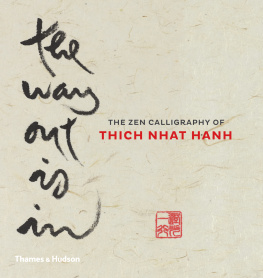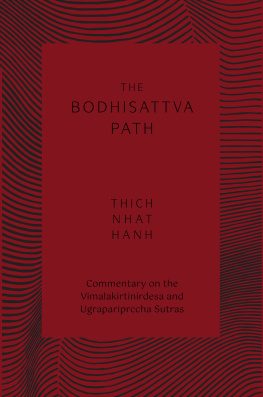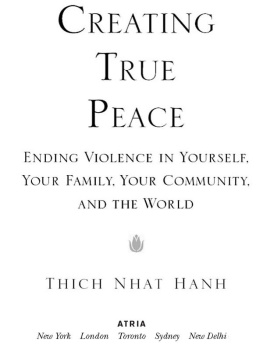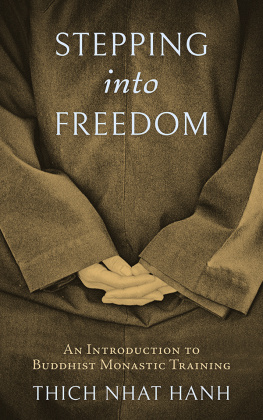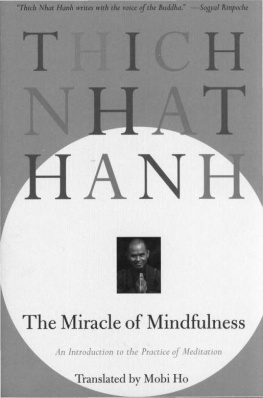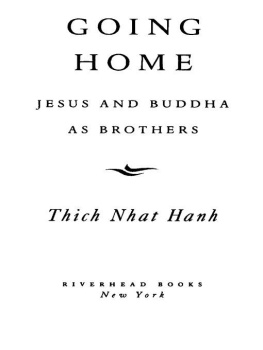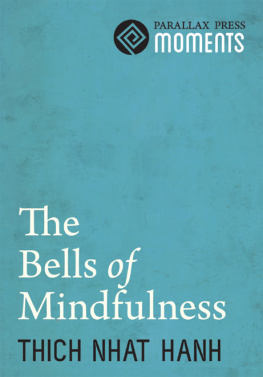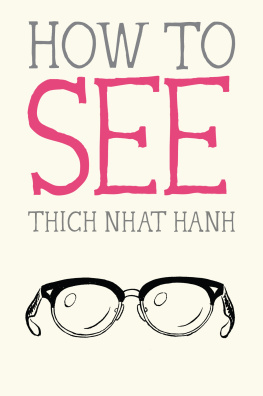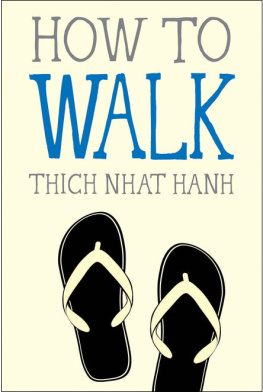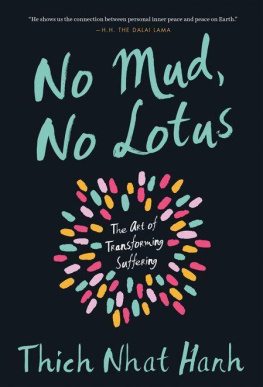

ABOUT THE AUTHOR
Thich Nhat Hanh is one of the best-known and most revered Zen masters in the world today. A peace and human-rights activist, prolific poet and author, he has written nearly 100 titles, among them the bestselling Call Me By My True Names, You Are Here, Peace Is Every Step, and Teachings on Love. His books have sold millions worldwide and have been translated into more than twenty languages. Among his many awards, the most notable are his nomination by Martin Luther King, Jr. for the Nobel Peace Prize in 1967 and the Courage of Conscience award in 1991 for his peace efforts in his native Vietnam.

Photo Eva Yuen, courtesy Plum Village
CONTENTS
Breathing in, I calm my body.
Breathing out, I smile.
Dwelling in the present moment,
I know this is a wonderful moment.
Everything we are looking for is right here in the present moment. When you wake up, you have joy when you see that youre alive and that twenty-four brand new hours have been delivered to your doorstep. What a gift. Yet so often we look to the past or the future, and we ignore the wonders that are right in front of us.
Mindfulness is the energy that allows us to stop and be present right here and right now. It allows us to notice what is going on in us and around us. All of my work and all of the calligraphies in this book are essentially just invitations to stop whatever else you are doing, to stop all the thinking, worrying and judging, and just breathe.
The breath is the vehicle to greater mindfulness. It is the tool that makes the present moment accessible. When you breathe in mindfully, you bring your mind home to your body. Whether your body is relaxed, tense, or tired, the first step is noticing that it is relaxed, tense, or tired. That is already insight. That awareness is the beginning of being more peaceful.
When I draw a calligraphy, I do not think. I know that thinking is sometimes productive, but most of our thinking is useless. When I draw, I just enjoy drawing. When you breathe, just enjoy breathing. When you walk, just enjoy walking. When you look at a piece of art, just look. Learning to stop the thinking takes some practice. Were used to thinking each moment of each day.
In the Zen tradition, poetry, art, and meditation always go together. The moment when I take a sheet of paper and begin to draw is not exactly the moment of the calligraphys creation. Whenever Im practicing mindful walking, breathing, even while cutting carrots, the art is being created. A work of art is conceived in the depths of your consciousness while youre not thinking about it. The moment when you begin to draw is only the moment when you deliver the baby you have been carrying. When I produce a calligraphy, what I care about is that the work embodies the energies of insight and compassion that I have been cultivating in daily life.
For me, doing calligraphy is itself a practice of meditation. Each session of calligraphy begins with tea. I never write calligraphy without first having a cup of tea. I need the tea to help me stay awake and draw calligraphy well. Tea and meditation have been together for many thousands of years. Long ago, the monks and nuns who practiced sitting meditation found that if you drink tea, then you can stay awake and you dont fall asleep during sitting meditation.
I like to drink tea and I drink a lot of tea, so I have a lot of experience looking deeply into it. If you look deeply into your tea, you can see a cloud. This tea has former lives and in one of its former lives it was a cloud. Not that long ago, it was a cloud floating in the sky, having a good time up there. One day it dispersed and was no longer there. The cloud became rain. The rain became the water for my tea. Then, when I drink the tea and begin to draw, the tea disperses and transforms into the calligraphy.
Of course the cloud and the rain dont really die. There is no dying; there is only transforming and changing. A cloud can become the rain, the snow, or the ice but a cloud can never become nothing. The same is true with everything else, including us human beings. We can never become nothing. We just transform.
When I am making calligraphy, I always mix some tea into my Chinese ink. So, if you look deeply into the calligraphy, you can see the tea inside. If you look more deeply, you will see something else. While doing calligraphy, I practice mindful breathing. I hold the brush and I breathe in for one, two, three seconds. During that time of breathing in, I make about one third of the circle. When I breathe out, I finish the rest of the circle; I take about five seconds to finish it. While Im breathing in, Im concentrating on my in-breath. When Im breathing out, Im concentrating on my out-breath. Sometimes I smile during the out-breath to relax my body. Theres no tension at all when I draw a circle. So when you look at the calligraphy, not only can you see a cloud, and not only can you see the tea, but you can also see my breath.
The hand that draws the calligraphy doesnt act alone. It is connected to my whole body, my mind, and all the cells in my body. I like to invite all my cells to join me in making a circle. These cells dont exist by themselves either. I invite all my ancestors to draw the circle with me, as well as all the people whose lives have touched mine. My whole community is in each calligraphy. Please dont think that these calligraphies are drawn by one person alone. We as a community have drawn this circle together.
A Bell of Mindfulness
When I was a young monk in Vietnam, each village temple had a big bell, like those in older Christian churches in many countries. Whenever the bell was invited to sound, all the villagers would stop what they were doing and pause for a few moments to breathe in and out in mindfulness.
In Plum Village, the community where I live in France, we do the same. Every time we hear the bell, we go back to ourselves and enjoy our breathing. When we breathe in, we say silently, Listen, listen, and when we breathe out, This wonderful sound brings me back to my true home.
This is the only moment that is real. To be present and enjoy this moment is our most important task. The sound of the bell is an invitation to use our breath to reunite mind and body and come back home to this present moment.
There are bells of mindfulness around us every day. The sound of a car honking and the ringing of your phone can also be reminders to stop, breathe, and come home. The beautiful sky is there available to you at every moment to look at and enjoy. This beautiful planet and the solid ground beneath your feet are always available to you. The whole world is full of these gentle reminders that help us come back to ourselves. Each of these calligraphies is also a bell of mindfulness, a reminder of the beauty in you and around you. You already have everything you need.
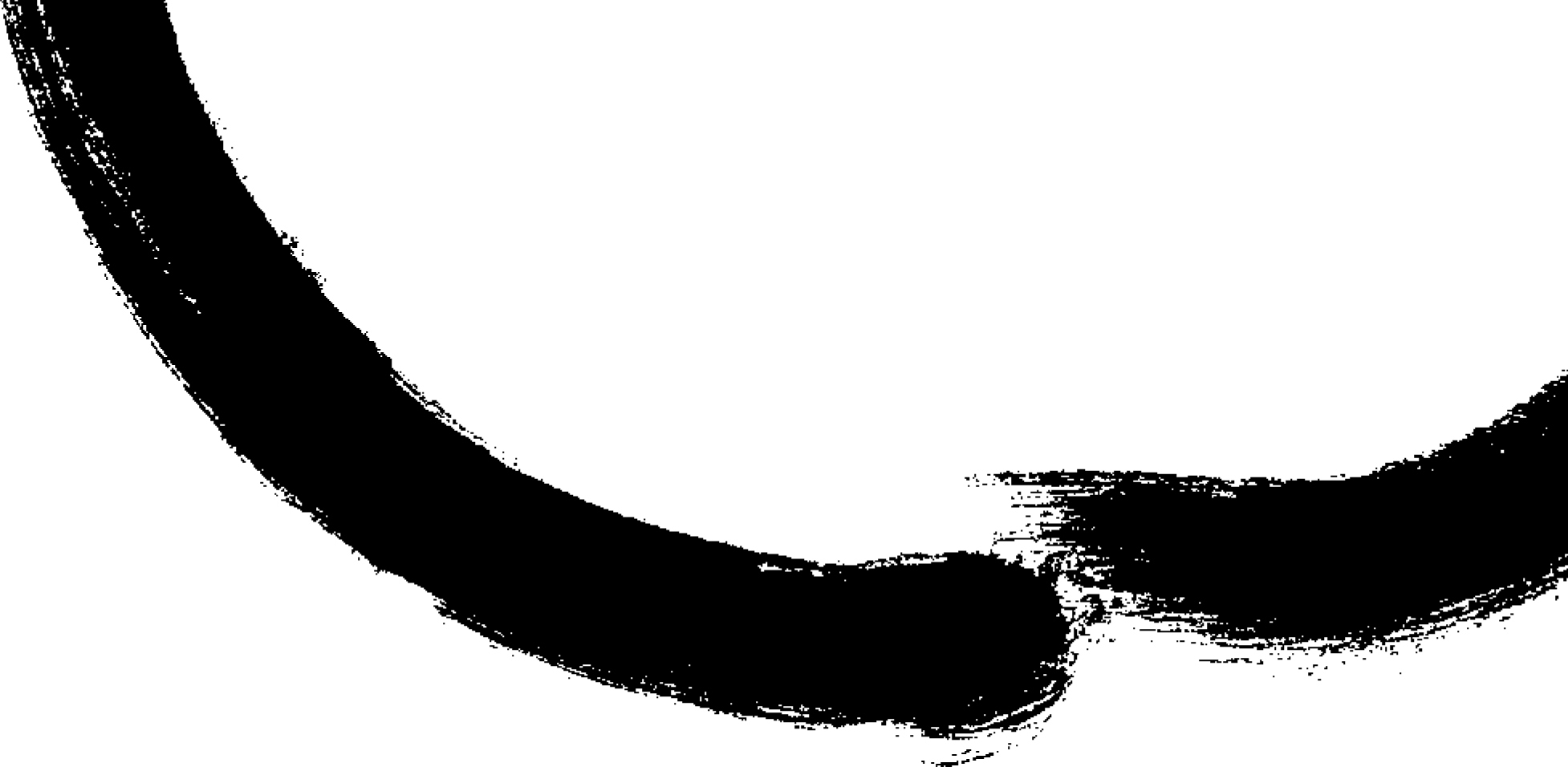

Next page
